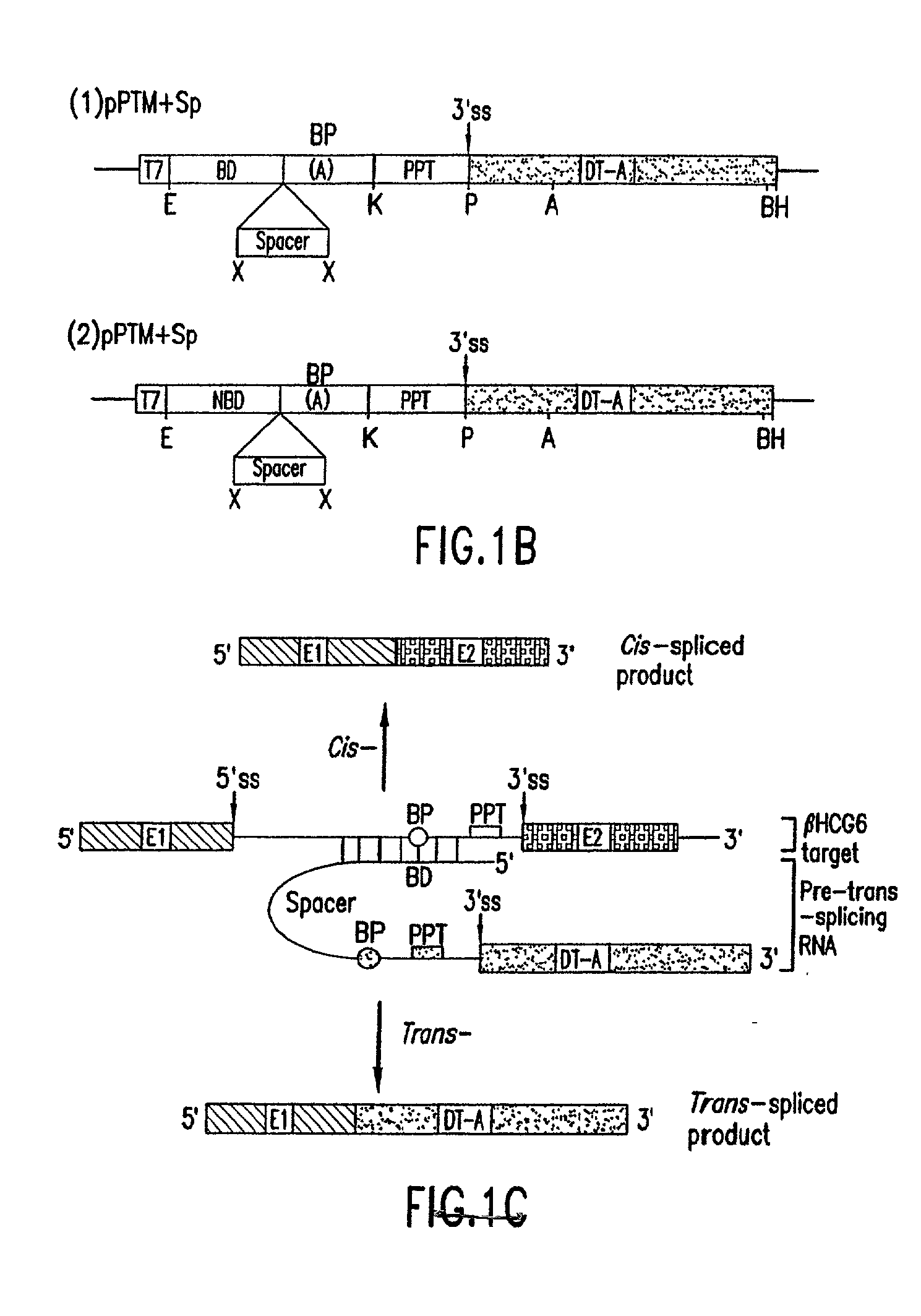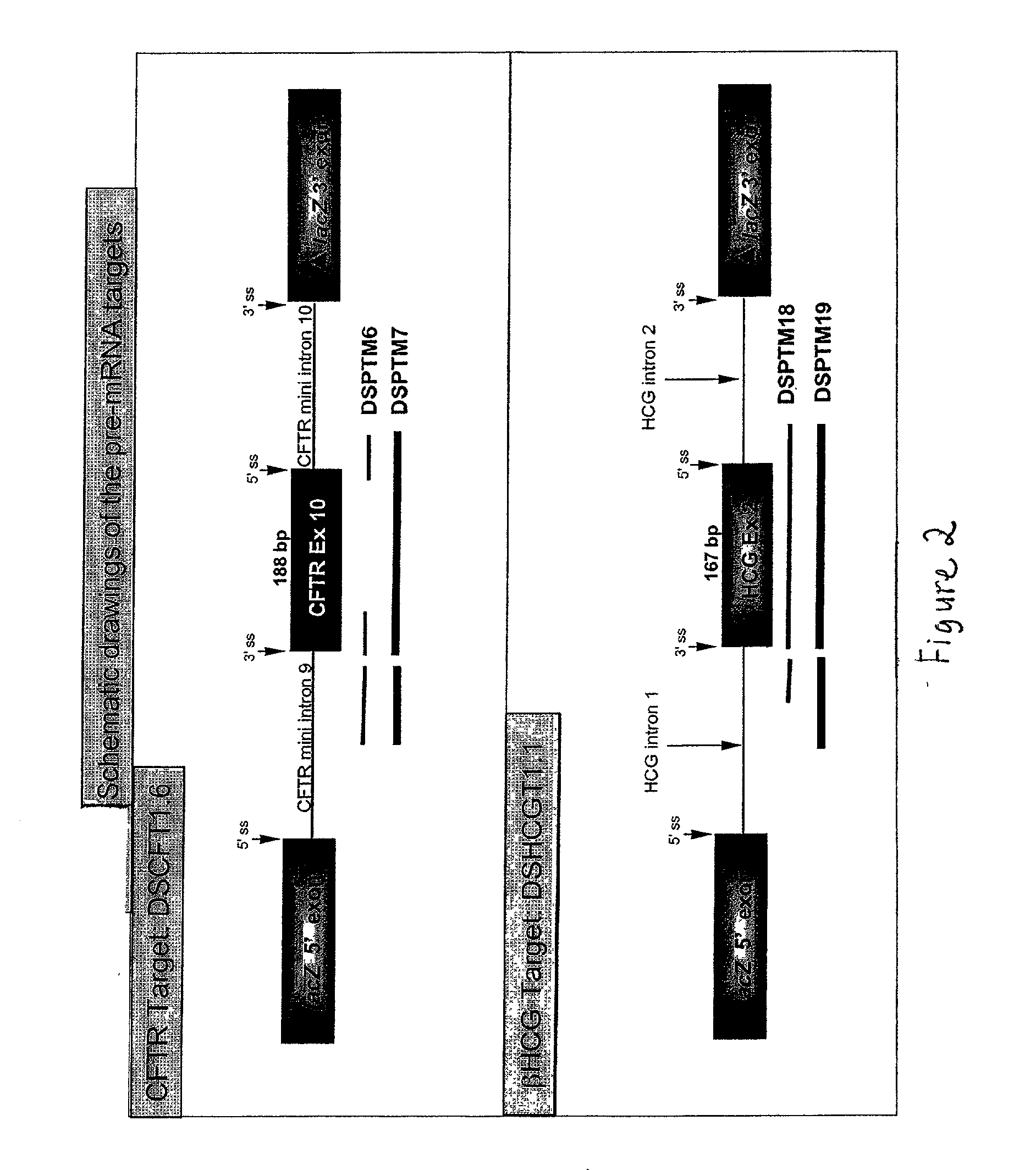Methods and compositions for use in spliceosome mediated RNA trans-splicing
a technology of rna transsplicing and spliceosome, which is applied in the direction of biochemistry apparatus and processes, peptides, genetic material ingredients, etc., can solve the problems of limited practical application of targeted transsplicing to modify specific target genes, complicating these methods, and exceedingly rare pre-mrnas splicing, etc., to achieve enhanced binding to target cells, enhanced cellular uptake, and enhanced targeting to the nucleus
- Summary
- Abstract
- Description
- Claims
- Application Information
AI Technical Summary
Benefits of technology
Problems solved by technology
Method used
Image
Examples
Embodiment Construction
[0028] The present invention provides methods and compositions for delivery of synthetic PTMs into a target cell. The present invention relates to compositions comprising synthetic pre-trans-splicing molecules and a suitable carrier or incipient and the use of such compositions for generating novel nucleic acid molecules within a target cell. The synthetic PTMs are preferably produced with enhanced resistance to enzymatic and / or chemical degradation. In addition, the carriers or excipients are designed to stabilize the PTM during in vitro formulation, increase the stability of the PTM in vivo and / or increase the efficiency of PTM transfer in vivo, thereby providing a more efficient PTM delivery system.
[0029] The synthetic PTMs of the invention comprise one or more target binding domains that are designed to specifically bind to pre-mRNA, a 3' splice region that includes a branch point, pyrimidine tract and a 3' splice acceptor site and / or a 5' splice donor site; and one or more spac...
PUM
| Property | Measurement | Unit |
|---|---|---|
| pH | aaaaa | aaaaa |
| stability | aaaaa | aaaaa |
| Nucleic Acid Transfer | aaaaa | aaaaa |
Abstract
Description
Claims
Application Information
 Login to view more
Login to view more - R&D Engineer
- R&D Manager
- IP Professional
- Industry Leading Data Capabilities
- Powerful AI technology
- Patent DNA Extraction
Browse by: Latest US Patents, China's latest patents, Technical Efficacy Thesaurus, Application Domain, Technology Topic.
© 2024 PatSnap. All rights reserved.Legal|Privacy policy|Modern Slavery Act Transparency Statement|Sitemap



